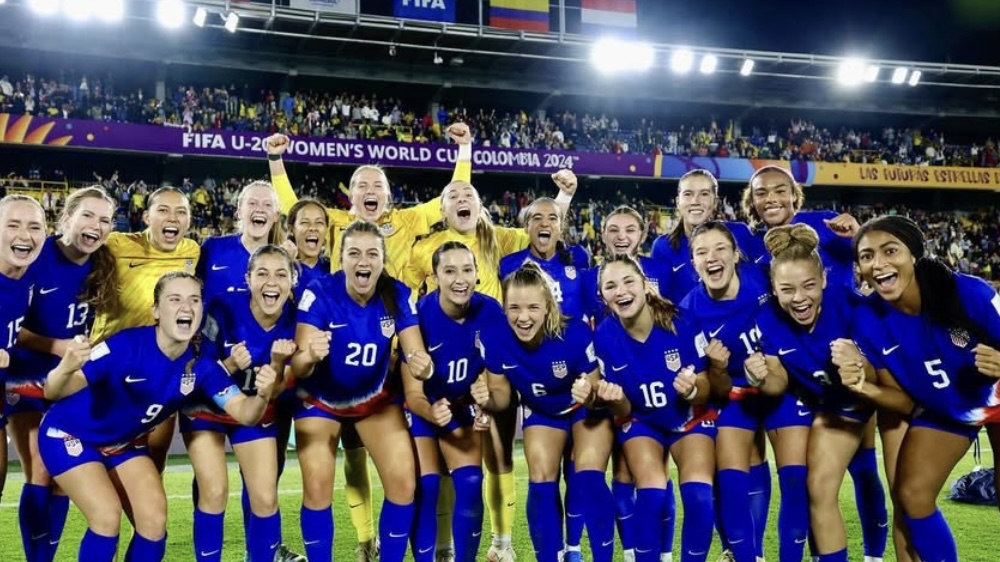The Key Differences in Youth Soccer in the U.S. & Europe
The United States and Europe are both powerhouses of women’s soccer, but how does that soccer talent begin? The U.S. and countries in Europe have completely different approaches to developing their youth soccer talent, and we’re here to highlight those differences.
School vs. Club Soccer
In the U.S., youth soccer players are mainly developed through schools and youth academies. Therefore, anyone who wants to play soccer in the U.S. will probably divide their time between playing for their school and camps.
However, in Europe, the training is mainly done by academies that are run by clubs. Take Juventus for example. The club runs academies for girls and trains them from an early age. The academies provide the children with everything they need, including paying for their education.
In the neighboring country of Spain, the players are also developed through club academies.
As Phil Ball noted in Four Four Two magazine: “The Spanish system is pretty comprehensive. They combine schools football and club football so that one weekend the kids will play with the school and a week later they will play for the local clubs. The coaching is more specialized at the clubs and the best players at the local clubs then get invited to train with the professional club, but the school and club teams are being monitored all the time so nobody can slip through the net.”
This means Spain truly has a system designed to bring the best youth soccer players through their ranks. This model has not only been applied to the boys, but to the girls as well. Alexia Putellas is one example of this. She came through the youth ranks of CE Sabadell, FC Barcelona, and RCD Espanyol before becoming a permanent fixture for Barça Femení. Now, she is one of the team’s stars and the recipient of the 2021 Ballon d’Or.
In countries like Italy, the development of their youth soccer players focuses on making them tactically astute as well as developing their technical ability. The stereotype is that the peninsula tends to focus on rigidly defensive tactics. However, that has changed in recent years as the Italians have become more open to embracing differing playing styles.
This allows players like Marta Mascarello to come through their ranks. Though Mascarello is a strong, defensive midfielder, she also exhibits the flair of a player like Andrés Iniesta, and it comes through in her style of play.
The Issue of Classism
Another issue affecting youth development in the U.S. is how much it costs to play soccer. In the U.S., it can cost thousands of dollars to attend a youth soccer camp. This prevents talented children from lower to middle-class families from being able to play soccer. Consequentially, youth players of color tend to be the ones shut out.
The MLS, for example, charges between $2,800 to $3,500 for children to enter their training academies.
Compare this to how much it costs to attend youth soccer academies in Europe and in particular, France. PSG, for example, only charges the families of children between the ages of 10 to 11 years old a fee of $200 to attend their academies for one year. The club pays for everything else, including equipment and the cost of playing in tournaments.
This model is why the likes of Kylian Mbappé and Kadidiatou Diani, have been able to make the transition from the banlieues (French suburbs) to becoming successful football players. Mbappé, for example, was born in Bondy, a poor suburb on the outskirts of France. If he had been born in the US, he would have most likely had to come from a wealthy middle-class family in order to become a professional soccer player.
The same goes for Diani and all the other players from the working-class banlieues.
This is something that even professional soccer players have found troublesome. AC Milan’s Zlatan Ibrahimović has complained that the sport is “expensive, very expensive” in the U.S. In his words, soccer should be for everyone and the model in America shuts good players out.
Former USWNT goalkeeper Hope Solo has spoken of this as well: “We talk about people of color when we speak about diversity but we also need to look at socioeconomic diversity,” Solo wrote. “When that gap is closed we will see a more accurate representation of the real America.”
The two comments illustrate the fact that while football is a sport that is enjoyed by all classes, in America, it’s mainly a sport for the wealthy.
Soccer is the sport that best represents this globalized world. There are Liverpool FC fans in Atlanta, GA, and Atlanta United fans in England. There are AC Milan fans in California and Italians who are eagerly awaiting the arrival of Angel City FC.
With this in mind, it’s not a stretch to see how different countries can borrow soccer training techniques from one another. The U.S. youth development system and the European system could learn a lot about how each other develop youth soccer players.
Photo via Adobe Stock @aceshot
_
GIRLS SOCCER NETWORK: YOUR SOURCE FOR GIRLS SOCCER NEWS









